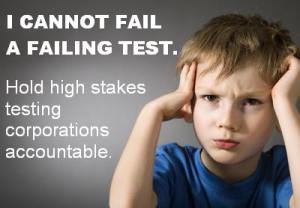Tamar Galatzan
Age: 45
Education: Birmingham High School, salutatorian (1987); Bachelor of Arts in political science, UCLA, magna cum laude (1991); Juris Doctor, University of California, Hastings College of the Law (1994)
Party affiliation: Democrat
Political experience: LAUSD board member, 2007-present
Work experience: deputy city attorney/neighborhood prosecutor (2002-present); Western States associate counsel, Anti-Defamation League (1996-2002)
Family: two sons who attend LAUSD schools
Scott Schmerelson
Age: 63
Eduction: Master of Science in education, school administration, Cal State L.A.
Party affiliation: Republican
Political experience: first run for public office
Work experience: more than 35 years as an educator, retired LAUSD principal
Family: Single
Carl Petersen
Age: 47
Education: attended Pace University for computer science and holds a Bachelor of Science in business management from the University of Phoenix
Party affiliation: Democrat
Political experience: first run for public office
Work experience: director of logistics at Arecont Vision, LLC
Family: married with five children, ages 14 to 22
Elizabeth Badger
Age:56
Education: Master of Public Policy and Administration, Cal State Northridge; Bachelor of Arts in political science, Cal State Northridge
Party affiliation: Democrat
Political experience: six terms on the Los Angeles County Democratic Party Central Committee, also a member of the organization’s executive board; ran for L.A. City Council and California State Assembly
Work experience: co-owner of B&B Automotive, founder and chief executive officer of the nonprofit Minority Outreach Committee
Family: married for 14 years, three biological and three stepchildren, the youngest two are in middle school while their older siblings work in banking, the Los Angeles Police Department and U.S. Marine Corps.
Filiberto Gonzalez
Age: 40
Education: Master of Social work, USC; Bachelor of Arts, Cal State Northridge
Party affiliation: Democratic
Political experience: Founded Californians for Safe Schools to organize parents against child abuse in 2012; North Valley Area Planning Commission member from August 2013 to October 2014
Work experience: Served as project director of an early childhood education initiative at United Way of Greater Los Angeles; also served in many management roles at North Valley Caring Services, a community-based nonprofit in North Hills, and chief development officer at Mexican American Opportunity Foundation
Family: married for 10 years; three girls, ages 2, 6 and 8. Two attend local LAUSD school in Chatsworth
Ankur Patel
Age: 29
Education: Master of Science in transportation, Cal State Northridge; Bachelor of Science, UCLA; educated in LAUSD’s San Fernando Valley schools from elementary through high school at North Hollywood High School
Party affiliation: Independent
Political experience: board member, treasurer and budget advocate in the Neighborhood Council System
Work experience: taught English for two years, taught as a graduate assistant at CSUN
Family: single, two younger brothers who also went through LAUSD, immigrant parents from India with strong educational values. Father studied under a street lamp, earned a degree in India and then came to America and earned an engineering degree from CSUN and worked as a rocket scientist in the San Fernando Valley for 30 years.
Los Angeles Unified’s primary election in District 3 is shaping up to be a battle of five Davids versus Goliath, after a charter school lobbying group slung its financial clout behind two-term incumbent Tamar Galatzan.
With an independent expenditure of $59,820 earlier this month, the California Charter Schools Association brought Galatzan’s financial backing to $74,125, more than all five of her challengers combined have so far at $52,816, according to campaign finance records.
Galatzan, whose District 3 seat representing the western San Fernando Valley is up for grabs in the March 3 primary, said her support for charter schools has been driven by campus-based educators.
Those educators, she said, are seeking to create either affiliated charters in hopes of alleviating fiscal straits or independent charters, which operate with near autonomy.
“The teachers at the campuses brought the petitions, and I’ve backed those teachers,” Galatzan said of her support for independent charter schools.
But challenger Filiberto Gonzalez said simply approving charter schools is creating a two-tiered system. In one tier are children who are fortunate enough to have parents who secure their seats at charter schools or pay for private education. The remainder, he said, will be left to suffer through LAUSD, a district that has proven too big to give taxpayers “a return on their investment” by educating students.
Gonzalez said he believes schools need more local control. But the way to achieve that lofty goal, he said, is by breaking up the nation’s second-largest school district into smaller, more manageable districts.
While the prospect is nothing new — breaking up LAUSD has been discussed for decades — now is the time to make it happen, and Gonzalez, who grew up in public housing, said he’s the candidate to get it done.
“I think if we’re able to get past the primary, and we’re doing everything we can to do that, we’ll have a very robust debate and discussion about that,” he said.
While Gonzalez has a grass-roots campaign, attending events and meeting voters in neighborhoods with traditionally high turnouts, his campaign coffer has only $2,321.
But it’s not the fewest dollars raised so far. Carl Petersen’s financial support amounts to a mere $1,260. The father of five decided to run after spending two days at LAUSD headquarters fighting with district lawyers for the services two of his children need because they suffer from disorders in the autistic spectrum. While campus-based educators agreed Petersen’s children needed the support, he said, district higher-ups didn’t agree.
“During those two days, I said, ‘Something has to change; parents need a say,’ and I decided I was going to step up and run,” Petersen said.
Petersen also believes the cure to many of LAUSD’s woes is more local control. But rather than break up the district, he said, LAUSD needs to set clear expectations and let educators decide how they’re best achieved.
“You have to let teachers do their thing. They’re professionals; that’s why we hired them,” said Petersen, who heads up logistics for a company that manufactures surveillance cameras. Accountability for educators has proven a contentious issue in the district, as former Superintendent John Deasy’s efforts to measure performance were staunchly opposed by the teachers union.
Candidate Ankur Patel, a former English teacher of two years and previous graduate assistant instructor, wants students to evaluate their educators rather than to rely heavily on test scores.
“The students spend more time with their teachers than anyone else and are in the best position to assess their educational experience,” Patel stated on his website.
Patel also wants smaller classes. While LAUSD has sought to reduce class sizes this year using additional state funding, Patel said far more needs to be done. Classrooms across the district are packed with more than 40 students, each of whom represents roughly $10,000 in state funding for a total of some $400,000 per room. Yet the textbooks are old, teachers aren’t paid enough and schools aren’t clean, Patel said.
Patel has more funding under the direct control of his campaign than any other candidate, including Galatzan, at $21,746 — an amount he amassed, in part, by contributing $5,000 to his campaign directly and loaning it another $5,000, according to campaign finance records.
Candidate Scott Schmerelson assembled the second-highest dollar figure directly under campaign control by borrowing $15,000 from himself.
The retired teacher and administrator worked in LAUSD schools for 33 years and carries the endorsements of LAUSD’s administrators union, Associated Administrators of Los Angeles, as well as the California School Employees Association, which represents clerical workers, teachers aids and other classified positions.
And he’s no stranger to troubled schools. When LAUSD wanted to prevent a state takeover of Johnnie L. Cochran Jr. Middle School when it was Mount Vernon Middle School, Schmerelson was called in. During his five years as principal, he improved test scores, conditions and morale at the troubled Mid-City campus, according to his website.
Schmerelson wants to increase local control by sending more decision-making power to school site councils, which are campus-based bodies of administrators, teachers and parents. He also wants teachers to evaluate the performance of their peers, as opposed to administrators, and create mentoring systems to support underperforming educators.
“The average teacher has close to 10 years’ experience right now. Why in the world would we move to get rid of struggling teachers without doing everything we can to help them improve instruction,” Schmerelson states on his website.
 If this corporation and the corporations of other high stakes testing companies can get away with this and remain in their multi-billion dollar businesses and government contracts, our children should also have legal disclaimers holding them unaccountable. The same goes for teachers and schools. Otherwise, the insanity and greed of the high stakes testing frenzy will continue and destroy any possibility of real educational growth for our children.
If this corporation and the corporations of other high stakes testing companies can get away with this and remain in their multi-billion dollar businesses and government contracts, our children should also have legal disclaimers holding them unaccountable. The same goes for teachers and schools. Otherwise, the insanity and greed of the high stakes testing frenzy will continue and destroy any possibility of real educational growth for our children.







